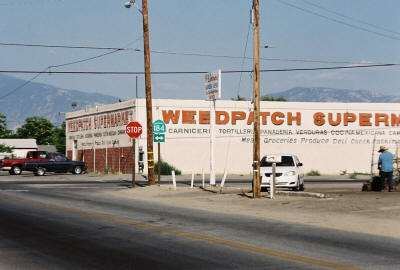

 Weedpatch appears to have earned its current name in the 1870s from
the immense amount of weeds said to have grown there. They are
believed to have been primarily thistles that sprang up due to a
natural water source that was evident in the area in those days.
Whether this was artesian in nature and similar to other artesian
wells in the central valley is uncertain. It is more likely that it
was the result of the Kern River Slough and naturally high
groundwater levels in the area at the time.
Weedpatch appears to have earned its current name in the 1870s from
the immense amount of weeds said to have grown there. They are
believed to have been primarily thistles that sprang up due to a
natural water source that was evident in the area in those days.
Whether this was artesian in nature and similar to other artesian
wells in the central valley is uncertain. It is more likely that it
was the result of the Kern River Slough and naturally high
groundwater levels in the area at the time.
The community of Weedpatch was also called Alexander’s Corner at one point in time. The name came from Calvin ‘Cal’ Alexander, who was a local resident and property owner in the area at that time. If these details are accurate, it would be akin to Bakersfield taking its name by virtue of being literally Colonel Baker’s Field. Today, with the weeds and the sub-irrigation long gone, there is little to distinguish Weedpatch from a hundred other similar central valley communities that sprang up on the then frontier.
Over the years, Weedpatch has melded somewhat into Lamont with the new Kern County justice buildings and Federal Post Office bridging a firm link between the two. A modern organic agribusiness facility now sits on the north end of Weedpatch, but a myriad of bars, cafes, gas stations, and other buildings help fill on the space along 'Weedpatch Highway'. The Weedpatch Market continues to operate much as it did 50 years ago, though the Hurry Back Inn, the Melody Club, and other once-popular night spots have long since passed into history.
The center of Weedpatch remains located on SR 184, generally in the areas northwest, northeast, and southeast of Buena Vista Road. A relatively new park is located on the south side of Buena Vista Road about a half mile west of the SR 184. In recent years many new homes and apartments have started to be built in the area. Curbs and gutters, as well as street lighting have served to improve the area's livability immensely. Weedpatch was and is a popular place to dwell with farm workers and others tied to local agribusiness. The historic Sunset Camp still lies about a mile due south of Weedpatch.